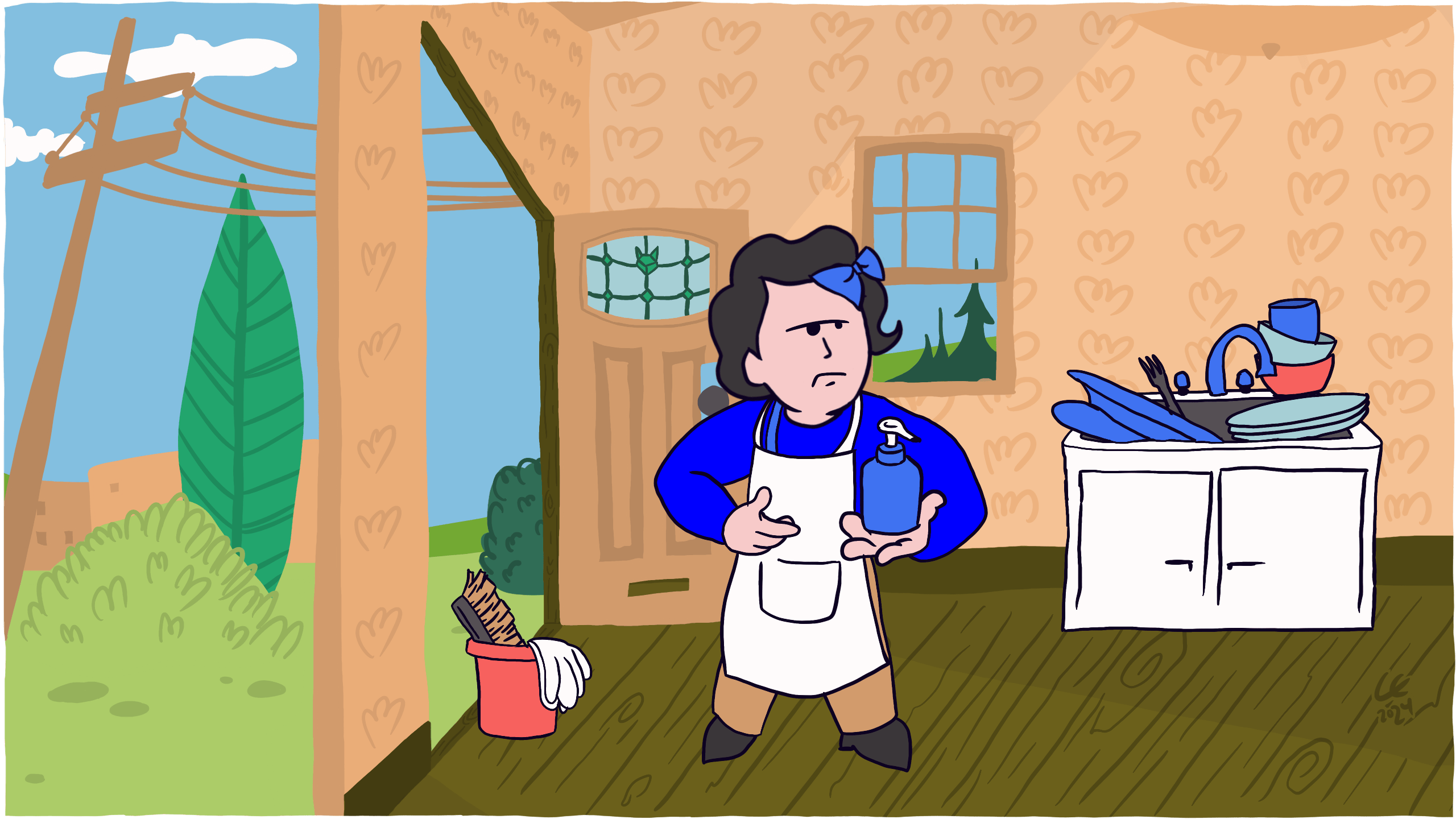I used to work in an office where the kitchen had a large sheet of A4 paper with, “YOUR MOM DOESN’T WORK HERE!!” written across it bold capitalised Times New Roman.
With two exclamation marks, to make everyone understand that this was a serious note with a serious message.
The responsibilities it implied, on the other hand, were never made as clear as the sign-maker’s frustration with the state of the kitchen.
When you see a sign saying, “Your mom doesn’t work here,” maybe you known that it means, “Keep it clean.”
Maybe.
But even if you do, it’s unlikely you know what, “clean,” means.
To Karen clean means, “Every mug for themselves and mine is in the dishwasher.”
Meanwhile, Jon has a high-pitched laugh as he scrubs until he can see his reflection in the sink.
You can probably see where the message is lost and why this doesn’t work so well.
Mistakes, miscommunication, and misinterpretations happen every day.
We think they don’t happen.
Our frustrations are born from the simple fact that the people around us do not share our experiences of the world.
So, how do we create a shared worldview?

Make expectations explicit
By making expectations concise and explicit, we remove the ambiguity that results from a lack of shared understanding.
The sign, “Your mom doesn’t work here,” would have been clearer if it instead had said, “Rinse and place your used items in the dishwasher.”
This was our sign-maker’s true intentions as well, something which was revealed when their original message was lost.
The same can be said for roles within a design agency.
It’s important to remember that our shared vocabulary and understanding will only be as good as the people contributing to it.
Building inclusive and accessible products and services means building teams that include minoritised and marginalised people.
Who does what?
The order of these does not represent a workflow order, any great team today needs to work in a bidirectional cross-disciplinary way.
- Client: Final decisions, legally responsible for accessibility
- Leadership: Make accessibility a business requirement, through actionable goals and objectives
- Sales: Set realistic expectations and sell accessibility as a requirement: legally, socially and financially
- Research: Include real people with disabilities in target demographics
- Marketing: Make sure brand palette, typeface and language guidelines are accessible
- Project management: Make sure team members know their responsibilities, and keep everyone accountable for building accessible products and services and give them time to do so
- Content design: Make sure content and microcopy is written in plain language and headings, images, and links are accurately labelled
- Visual design: Make sure designs are accessible, pages are laid out in a logical order, and content meets colour contrast requirements
- User experience design: Make sure that overall experience is built and designed in an accessible fashion, conduct usability testing with people who need accessibility features
- Front end development: Make sure front-end code is written accessibly and conducts manual and automated testing.
- Back end development: Make sure back-end code is robust and able to return purposeful error messages
- Quality assurance (QA) and testing: Make sure testing is done with real people with disabilities, using real-life scenarios
I’m not an expert in all these disciplines so if you’re a person who works in these fields, let’s chat.
Every agency has a dominant discipline, for some, it’s visual design, for others it’s technical proficiency.
It’s almost always whatever the founder(s) are good at.
Understand what your agency’s dominant discipline is so that you can complement the gaps.
Because a single gap can easily become multiple gaps of mistakes, miscommunication, and misinterpretations resulting in lost information and incomplete work.
Going back to that office where I used to work, it didn’t help the sign-maker and their case that out of the four co-owners, three of their moms actually worked there.
Which unfortunately meant, no one ever learned to keep the kitchen clean.
So, what do you do?
Know someone who would benefit from this article? Share it with them.